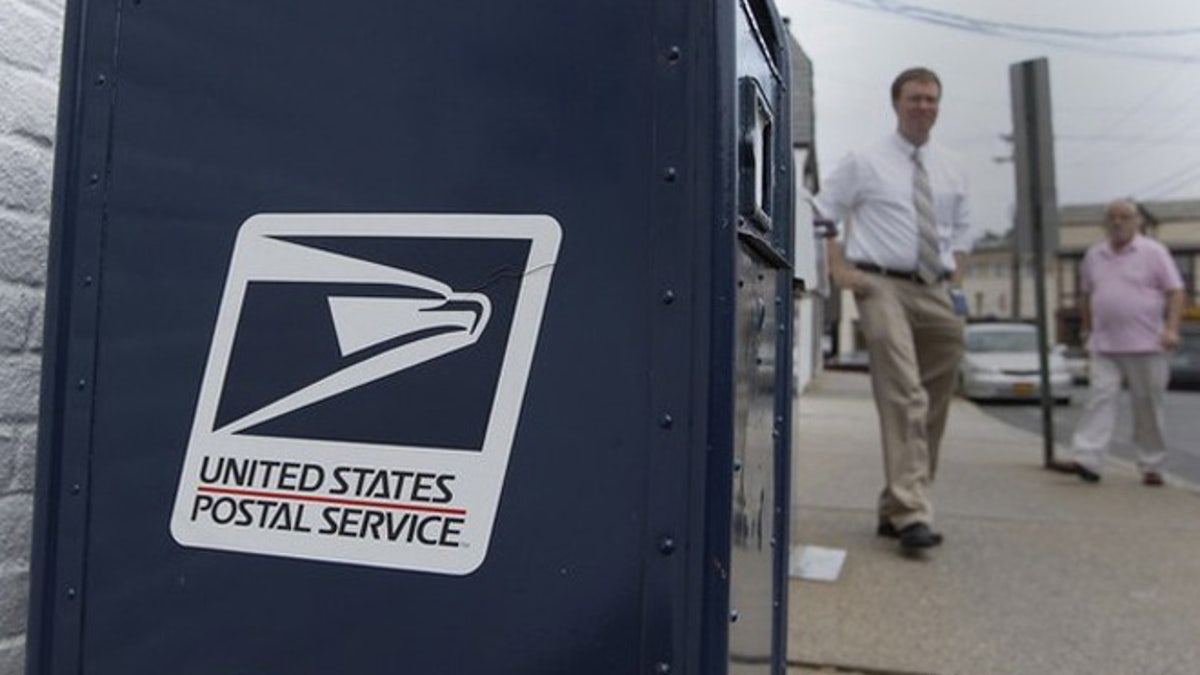
Aug. 1, 2012: A United Sates Postal Service mailbox is seen in Manhasset, N.Y. (Reuters)
WASHINGTON – Allowing the Postal Service to deliver beer, wine and spirits is high on his wish list for raising cash for his financially ailing agency, Postmaster General Patrick Donahoe said Thursday.
In an interview with The Associated Press, Donahoe also endorsed ending most door-to-door and Saturday mail deliveries as cost-saving measures for his agency, which lost $16 billion last year.
Donahoe said delivering alcohol has the potential to raise as much as $50 million a year. He mentioned how customers might want to, for example, mail bottles of wine home when they tour vineyards. Donahoe said his agency has looked at the possibility of using special boxes that would hold two, four or six bottles and ship for a flat-rate to anywhere in the country.
"There's a lot of money to be made in beer, wine and spirits," Donahoe said. "We'd like to be in that business."
The Postal Service says mailing alcoholic beverages is currently restricted by law. Customers are even told to cover any logos or labels if they use alcoholic beverage boxes for shipments.
The agency is also urging changes in how it delivers the mail. A House committee has passed legislation to stabilize the Postal Service's ailing finances that would cut letter deliveries to five days and phase out door-to-door deliveries over 10 years. The bill does not include a provision to allow the agency to deliver alcohol.
The Senate passed a postal reform bill last year that included a provision allowing the agency to deliver alcohol. The bill required that such shipments would have to comply with any state laws from where the shipment was originated and delivered. The measure also said the recipient had to be at least 21 years old and would need to provide a valid government-issued photo identification upon delivery.
The agency lost $16 billion last year and is working toward restructuring its retail, delivery and mail processing operations.
The service's losses are largely due to a decline in mail volume and a congressional requirement that it make advance payments to cover expected health care costs for future retirees. About $11.1 billion of last year's losses were due to payments it must make for future retiree health costs.
The House Oversight and Government Reform Committee recently approved a plan for the service to gradually shift from door delivery to cluster box and curbside delivery, which includes mailboxes at the end of driveways. The agency has been moving toward curbside and cluster box delivery in new residential developments since the 1970s.
About 1 in 3 mail customers has door-to-door delivery. Some lawmakers have complained that ending door delivery in many densely developed urban areas would be difficult.
"We'd work with the communities," Donahoe said, adding there would be special hardship exemptions for those physically unable to get their mail at centralized locations. "We want to figure out how to do it so people don't get mad."
Some 30 million residential addresses receive delivery to boxes at the door or a mail slot. Another 87 million residential addresses receive curbside or cluster box delivery.
Door-to-door delivery costs the agency about $350 per year, on average. Curbside delivery costs average $224 per year for each address, while cluster box delivery averages $160.
The service earlier this year backpedaled on its plan to end Saturday mail delivery after running into opposition in Congress. It has tried repeatedly and unsuccessfully over the past several years to persuade Congress to approve ending Saturday mail delivery.
The National Association of Letter Carriers has said ending Saturday delivery would in particular hurt rural residents and the elderly who depend more heavily on the mail for prescription drugs and other goods.
The Senate last year passed a bill that would have stopped the Postal Service from eliminating Saturday service for at least two years and required it to try two years of cost-cutting instead. The House didn't pass a bill.




